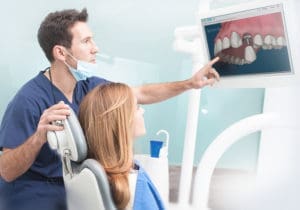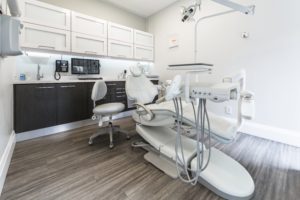 For many dentists, the eventual sale of their dental practice is a significant portion of their retirement plan. With this in mind, it makes perfect sense to build up the areas of your practice that can maximize sale value to a potential buyer.
For many dentists, the eventual sale of their dental practice is a significant portion of their retirement plan. With this in mind, it makes perfect sense to build up the areas of your practice that can maximize sale value to a potential buyer.
We have also noticed a trend in recent years amongst those practitioners with an entrepreneurial bent to build up and KEEP their practices, moving from chairside to a managerial role. And even if you count yourself amongst those looking to do this, it still makes sense to increase/maximize the value of your dental practice!
Which brings us back to the matter at hand. In this article, I’m going to provide several recommendations as to where to focus your attention to build up your practice’s value over time.
And, disclaimer: I’m not a practice broker and this post is not an in-depth analysis or calculation of exactly what your practice is worth.
With that said, we (MGE) have worked with thousands of dentists across the US and Canada, in the course of which, we’ve compiled considerable knowledge about what to look for in a practice purchase or sale—i.e. what’s a “good” and “bad” purchase. And it’s from this viewpoint that I wanted to share some of what I’ve learned.
And I’m going to start with a couple of things NOT to focus on. Specifically, things that may be great for you, but don’t increase practice value as much as you’d think.
Things NOT to Focus On (These may be great for you, but don’t increase practice value as much as you think):
1. Doing a high volume of high-dollar specialty cases
 If you’re doing advanced reconstruction cases, all-on-fours, implants, surgeries, orthodontics, etc, that is fantastic and I recommend continuing to do it. You can change patient’s lives this way and increase collections tremendously. And this is GREAT! Continue!
If you’re doing advanced reconstruction cases, all-on-fours, implants, surgeries, orthodontics, etc, that is fantastic and I recommend continuing to do it. You can change patient’s lives this way and increase collections tremendously. And this is GREAT! Continue!
But…from a practice sale perspective, you’re limiting your buying pool. The vast majority of dentists looking to buy a practice are not able to do these procedures.
So yes, keep doing these procedures—and the increased collections will raise practice value a bit—but don’t be surprised if you have a hard time finding buyers willing to pay what you’d expect to be worth based strictly on gross collections.
The same would go for things like Botox, sleep apnea, etc.
A practice with equivalent revenues based mostly on bread-and-butter dentistry will tend to sell easier.
2. Hi-tech equipment
 Like the other point above, it’s fantastic to have the newest hi-tech equipment so you can offer your patients the best possible treatment. Do it for that reason—to improve quality of care for your patients.
Like the other point above, it’s fantastic to have the newest hi-tech equipment so you can offer your patients the best possible treatment. Do it for that reason—to improve quality of care for your patients.
But don’t expect to get your money back out of things like scanners, CEREC, imaging, etc, in the practice sale. I have heard things like, “But, but, but…I paid $150,000 for that just a couple years ago!” many times.
In fact, you very well may make more money back by selling each individual piece of equipment separately than by lumping it all into the practice sale.
Buyers are going to focus first and foremost on the charts and the facilities.
Alright, with those two points out of the way, let’s move on to things that WILL increase your dental practice’s value.
Things that WILL increase your dental practice’s value:
As a quick overview, here are the most important factors in practice value:
- Gross collections (obviously)
- Active patient count
- A strong hygiene program
- Profitability, (especially as it relates to long-term unchangeable contracts – e.g. your office lease, etc.).
1. Gross revenues (ideally with the majority from bread-and-butter dentistry)
Obviously gross revenues are going to play a big factor in practice value. I don’t think I have to explain that one.
I’m just adding the caveat here that as I mentioned above regarding high-dollar specialty cases—it’s best if you have a lot of revenue coming from bread-and-butter dentistry. If you’ve got a lot of collections coming in from fillings, crowns, perio treatments, recall, etc, that’s going to be attractive to any dentist.
There are lots of things you can do to increase practice collections, and if you’d like some help with that, attend one of our free virtual seminars or come to the MGE Communication & Sales Seminars—which give attendees an average increase of $288,000 per year in collections.
2. A strong hygiene program
 This is actually the number one area I focus on—both for sale value and just your own general success whether you wish to sell or not.
This is actually the number one area I focus on—both for sale value and just your own general success whether you wish to sell or not.
In practice sales, a lot is going to revolve around “active charts.” And where do active chart come from? Hygiene.
Where many dentists go wrong is by focusing on “active charts” as in “patients that have been in within the last 18-24 months” to evaluate their patient retention. You should be focusing on a six-month basis because that will tell you how many are actually keeping their hygiene schedule.
If you focus properly on building up your hygiene program (use this calculator to evaluate your hygiene department’s potential), then when a practice broker comes around, they’ll be amazed by your active patient count.
For a solo doctor practice, I want to see at least 2,000 prophies/SRPs per year.
3. Go fee-for-service
If you really want a high-value practice, then you’ll want to participate in few (or no) PPOs, no HMOs, and no state insurances.
When you start to calculate the amount you’re actually losing in write-offs from reduced-fee insurance plans, it’s pretty staggering (see more here).
The profit margin is so much better with a fee-for-service practice that it becomes a much more desirable practice.
If you’re interested in dropping insurance plans, use our free Insurance Plan Analyzer here or call us at (800) 640-1140 and we’ll help you determine if it’s a good idea. There is definitely a right way and a wrong way to do it.
4. Ideally you’ll want at least 4 working operatories
 I mentioned above that a strong hygiene program is the key to practice value. And well, you can’t have a strong hygiene program if you don’t have the space for it.
I mentioned above that a strong hygiene program is the key to practice value. And well, you can’t have a strong hygiene program if you don’t have the space for it.
As a solo practitioner, you may think that one hygienist is plenty, but after a few years in practice with good patient retention, you should definitely be able to start keeping a second hygienist busy.
And of course, the option to build out more is always a plus.
5. Either own the building or have a well-negotiated lease with the option to renew
I have seen many dentists get into situations they regret with their office lease, whether it’s too expensive (affecting profitability), or offers no room for expansion. When you sign it, it seems simple, but then when you’re looking to sell…issues can come up. No one wants to buy a practice where the rent is about to skyrocket or they’re going to be kicked out.
So, make sure you have a good lease, and if you have any questions on this, speak to a specialist in lease negotiation.
Of course, it’s always nice if you have the opportunity to own the building outright. Then you can either sell it with the practice to increase the sum or rent it out to the new owner and possibly even lease out other spaces to create passive income for your retirement.
I hope these tips help! If you’d like a more thorough assessment of your practice, we’d be happy to do a free consultation with you. Just fill out the form here or calls us at (800) 640-1140 today.


Good comments Chris